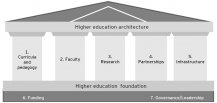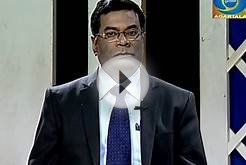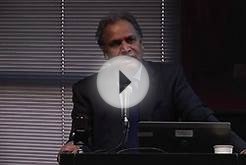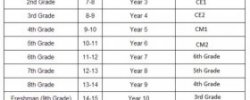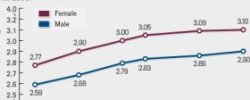In the Beginning
In ancient times, India had the Gurukula system of education in which anyone who wished to study went to a teacher's (Guru) house and requested to be taught. If accepted as a student by the guru, he would then stay at the guru's place and help in all activities at home. This not only created a strong tie between the teacher and the student, but also taught the student everything about running a house. The guru taught everything the child wanted to learn, from Sanskrit to the holy scriptures and from Mathematics to Metaphysics. The student stayed as long as she wished or until the guru felt that he had taught everything he could teach. All learning was closely linked to nature and to life, and not confined to memorizing some information.
The modern school system was brought to India, including the English language, originally by Lord Thomas Babington Macaulay in the 1830s. The curriculum was confined to “modern” subjects such as science and mathematics, and subjects like metaphysics and philosophy were considered unnecessary. Teaching was confined to classrooms and the link with nature was broken, as also the close relationship between the teacher and the student.
The Uttar Pradesh (a state in India) Board of High School and Intermediate Education was the first Board set up in India in the year 1921 with jurisdiction over Rajputana, Central India and Gwalior. In 1929, the Board of High School and Intermediate Education, Rajputana, was established. Later, boards were established in some of the states. But eventually, in 1952, the constitution of the board was amended and it was renamed Central Board of Secondary Education (CBSE). All schools in Delhi and some other regions came under the Board. It was the function of the Board to decide on things like curriculum, textbooks and examination system for all schools affiliated to it. Today there are thousands of schools affiliated to the Board, both within India and in many other countries from Afghanistan to Zimbabwe.
Universal and compulsory education for all children in the age group of 6-14 was a cherished dream of the new government of the Republic of India. This is evident from the fact that it is incorporated as a directive policy in article 45 of the constitution. But this objective remains far away even more than half a century later. However, in the recent past, the government appears to have taken a serious note of this lapse and has made primary education a Fundamental Right of every Indian citizen. The pressures of economic growth and the acute scarcity of skilled and trained manpower must certainly have played a role to make the government take such a step. The expenditure by the Government of India on school education in recent years comes to around 3% of the GDP, which is recognized to be very low.
“In recent times, several major announcements were made for developing the poor state of affairs in education sector in India, the most notable ones being the National Common Minimum Programme (NCMP) of the United Progressive Alliance (UPA) government. The announcements are; (a) To progressively increase expenditure on education to around 6 percent of GDP. (b) To support this increase in expenditure on education, and to increase the quality of education, there would be an imposition of an education cess over all central government taxes. (c) To ensure that no one is denied of education due to economic backwardness and poverty. (d) To make right to education a fundamental right for all children in the age group 6–14 years. (e) To universalize education through its flagship programmes such as Sarva Siksha Abhiyan and Mid Day Meal.” Wikipedia: Education in India.
The School System
India is divided into 28 states and 7 so-called “Union Territories”. The states have their own elected governments while the Union Territories are ruled directly by the Government of India, with the President of India appointing an administrator for each Union Territory. As per the constitution of India, school education was originally a state subject —that is, the states had complete authority on deciding policies and implementing them. The role of the Government of India (GoI) was limited to coordination and deciding on the standards of higher education. This was changed with a constitutional amendment in 1976 so that education now comes in the so-called concurrent list. That is, school education policies and programmes are suggested at the national level by the GoI though the state governments have a lot of freedom in implementing programmes. Policies are announced at the national level periodically. The Central Advisory Board of Education (CABE), set up in 1935, continues to play a lead role in the evolution and monitoring of educational policies and programmes.
There is a national organization that plays a key role in developing policies and programmes, called the National Council for Educational Research and Training (NCERT) that prepares a National Curriculum Framework. Each state has its counterpart called the State Council for Educational Research and Training (SCERT). These are the bodies that essentially propose educational strategies, curricula, pedagogical schemes and evaluation methodologies to the states' departments of education. The SCERTs generally follow guidelines established by the NCERT. But the states have considerable freedom in implementing the education system.
The National Policy on Education, 1986 and the Programme of Action (POA) 1992 envisaged free and compulsory education of satisfactory quality for all children below 14 years before the 21st Century. The government committed to earmark 6% of the Gross Domestic Product (GDP) for education, half of which would be spent on primary education. The expenditure on Education as a percentage of GDP also rose from 0.7 per cent in 1951-52 to about 3.6 per cent in 1997-98.

